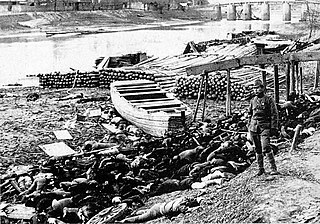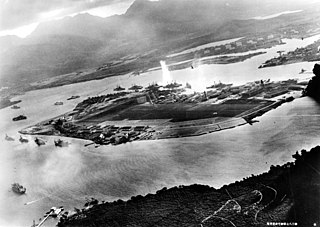Related Research Articles

Anime is hand-drawn and computer animation originating from Japan. In Japanese, anime, a term derived from the English word animation, describes all animated works, regardless of style or origin. Outside of Japan, anime refers specifically to animation produced in Japan, or to its common style, which has since been adopted by a minority of works produced in other countries.

Hirohito was the 124th emperor of Japan according to the traditional order of succession. He reigned as the emperor of the Empire of Japan (大日本帝國) from 25 December 1926 until 2 May 1947 and of the state of Japan (日本国) from 3 May 1947 until his death on 7 January 1989. He was succeeded by his fifth child and eldest son, Akihito. Hirohito and his wife, Empress Kojun, had seven children, two sons and five daughters. In Japan, reigning emperors are known only as "the Emperor." He is now referred to primarily by his posthumous name, Shōwa (昭和), which is the name of the era coinciding with his reign; for this reason, he is also known as the Shōwa Emperor or Emperor Shōwa. By 1979, Hirohito was the only monarch in the world with the monarchical title "emperor." Hirohito was the longest-lived and longest-reigning historical Japanese emperor and one of the longest-reigning monarchs in the world.

Japan is an island country in East Asia, located in the northwest Pacific Ocean. It is bordered on the west by the Sea of Japan, and extends from the Sea of Okhotsk in the north toward the East China Sea and Taiwan in the south. Part of the Ring of Fire, Japan spans an archipelago of 6852 islands covering 377,975 square kilometers (145,937 sq mi); the five main islands are Hokkaido, Honshu, Shikoku, Kyushu, and Okinawa. Tokyo is Japan's capital and largest city; other major cities include Yokohama, Osaka, Nagoya, Sapporo, Fukuoka, Kobe, and Kyoto.
Japanese is an East Asian language spoken by about 128 million people, primarily in Japan, where it is the national language. It is a member of the Japonic language family, and its relation to other languages, such as Korean, is debated. Japonic languages have been grouped with other language families such as Ainu, Austroasiatic, and the now-discredited Altaic, but none of these proposals has gained widespread acceptance.

Manga are comics or graphic novels originating from Japan. Most manga conform to a style developed in Japan in the late 19th century, and the form has a long prehistory in earlier Japanese art. The term manga is used in Japan to refer to both comics and cartooning. Outside of Japan, the word is typically used to refer to comics originally published in the country.

Sushi is a traditional Japanese dish of prepared vinegared rice, usually with some sugar and salt, accompanying a variety of ingredients, such as seafood, often raw, and vegetables. Styles of sushi and its presentation vary widely, but the one key ingredient is "sushi rice", also referred to as shari (しゃり), or sumeshi (酢飯).

Tokyo, officially Tokyo Metropolis, is the capital and most populous prefecture of Japan. Located at the head of Tokyo Bay, the prefecture forms part of the Kantō region on the central Pacific coast of Japan's main island of Honshu. Tokyo is the political and economic center of the country, as well as the seat of the Emperor of Japan and the national government. In 2019, the prefecture had an estimated population of 13,929,280. The Greater Tokyo Area is the most populous metropolitan area in the world, with more than 37.393 million residents as of 2020.

World War II, also known as the Second World War, was a global war that lasted from 1939 to 1945. It involved the vast majority of the world's countries—including all the great powers—forming two opposing military alliances: the Allies and the Axis. In a state of total war, directly involving more than 100 million personnel from more than 30 countries, the major participants threw their entire economic, industrial, and scientific capabilities behind the war effort, blurring the distinction between civilian and military resources. World War II was the deadliest conflict in human history, resulting in 70 to 85 million fatalities, with more civilians than military personnel killed. Tens of millions of people died due to genocides, premeditated death from starvation, massacres, and disease. Aircraft played a major role in the conflict, including in strategic bombing of population centres, the development of nuclear weapons, and the only two uses of such in war.

The Russo-Japanese War was fought during 1904 and 1905 between the Russian Empire and the Empire of Japan over rival imperial ambitions in Manchuria and Korea. The major theatres of operations were the Liaodong Peninsula and Mukden in Southern Manchuria and the seas around Korea, Japan and the Yellow Sea.
Yakuza, also known as gokudō, are members of transnational organized crime syndicates originating in Japan. The Japanese police, and media by request of the police, call them bōryokudan, while the yakuza call themselves ninkyō dantai. The English equivalent for the term yakuza is gangster, meaning an individual involved in a Mafia-like criminal organization. The yakuza are known for their strict codes of conduct, their organized fiefdom nature, and several unconventional ritual practices such as yubitsume, or amputation of the left little finger. Members are often described as males, wearing "sharp suits" with heavily tattooed bodies and slicked hair. This group is still regarded as being among "the most sophisticated and wealthiest criminal organizations".

The Nanjing Massacre or the Rape of Nanjing was an episode of mass murder and mass rape committed by Imperial Japanese troops against the residents of Nanjing (Nanking), at that time the capital of China, during the Second Sino-Japanese War.

The Attack on Pearl Harbor was a surprise military strike by the Imperial Japanese Navy Air Service upon the United States against the naval base at Pearl Harbor in Honolulu, Territory of Hawaii, just before 08:00, on Sunday morning, December 7, 1941. The attack led to the United States' formal entry into World War II the next day. The Japanese military leadership referred to the attack as the Hawaii Operation and Operation AI, and as Operation Z during its planning. Japan intended the attack as a preventive action to keep the United States Pacific Fleet from interfering with its planned military actions in Southeast Asia against overseas territories of the United Kingdom, the Netherlands, and the United States. Over the course of seven hours there were coordinated Japanese attacks on the U.S.-held Philippines, Guam, and Wake Island and on the British Empire in Malaya, Singapore, and Hong Kong.

The Battle of Midway was a major naval battle in the Pacific Theater of World War II that took place on 4–7 June 1942, six months after Japan’s attack on Pearl Harbor and one month after the Battle of the Coral Sea. The U.S. Navy under Admirals Chester W. Nimitz, Frank J. Fletcher, and Raymond A. Spruance defeated an attacking fleet of the Imperial Japanese Navy under Admirals Isoroku Yamamoto, Chūichi Nagumo, and Nobutake Kondō near Midway Atoll, inflicting devastating damage on the Japanese fleet that rendered their aircraft carriers irreparable. Military historian John Keegan called it "the most stunning and decisive blow in the history of naval warfare", while naval historian Craig Symonds called it "one of the most consequential naval engagements in world history, ranking alongside Salamis, Trafalgar, and Tsushima Strait, as both tactically decisive and strategically influential".

The Second Sino-Japanese War (1937–1945) was a military conflict that was primarily waged between the Republic of China and the Empire of Japan. In China, the war is known as the War of Resistance against Japanese Aggression, or as the oriental theatre of the World Anti-Fascist War, the latter term originating from Mao Zedong's wartime alliance with Stalin. The war made up the Chinese theater of the wider Pacific Theater of the Second World War. The beginning of the war is conventionally dated to the Marco Polo Bridge Incident 7 July 1937, when a dispute between Japanese and Chinese troops in Peking escalated into a full-scale invasion. This full-scale war between the Chinese and the Empire of Japan is often regarded as the beginning of World War II in Asia. In 2017 the Ministry of Education in the People's Republic of China decreed that the term "eight-year war" in all textbooks should be replaced by “fourteen-year war", with a revised starting date of 18 September 1931 provided by the Japanese invasion of Manchuria. According to historian Rana Mitter, historians in China are unhappy with the blanket revision, and the Republic of China did not consider itself to be continuously at war with Japan over these six years.

Iwo Jima, known in Japan as Iō Tō, is one of the Japanese Volcano Islands and lies south of the Bonin Islands. Together with other islands, they form the Ogasawara Archipelago. The highest point of Iwo Jima is Mount Suribachi at 169 m (554 ft) high.

The Empire of Japan was a historical nation-state that existed from the Meiji Restoration in 1868 until the enactment of the post-World War II 1947 constitution and subsequent formation of modern Japan. It encompassed the Japanese archipelago and several colonies, protectorates, mandates, and other territories.

Naruto is a Japanese manga series written and illustrated by Masashi Kishimoto. It tells the story of Naruto Uzumaki, a young ninja who seeks recognition from his peers and dreams of becoming the Hokage, the leader of his village. The story is told in two parts – the first set in Naruto's pre-teen years, and the second in his teens. The series is based on two one-shot manga by Kishimoto: Karakuri (1995), which earned Kishimoto an honorable mention in Shueisha's monthly Hop Step Award the following year, and Naruto (1997).

The Pacific War, sometimes called the Asia–Pacific War, was the theater of World War II that was fought in Asia, the Pacific Ocean, the Indian Ocean, and Oceania. It was geographically the largest theater of the war, including the vast Pacific Ocean theater, the South West Pacific theater, the South-East Asian theater, the Second Sino-Japanese War, and the Soviet–Japanese War.

One Piece is a Japanese manga series written and illustrated by Eiichiro Oda. It has been serialized in Shueisha's Weekly Shōnen Jump magazine since July 1997, with its individual chapters compiled into 97 tankōbon volumes as of September 2020. The story follows the adventures of Monkey D. Luffy, a boy whose body gained the properties of rubber after unintentionally eating a Devil Fruit. With his crew of pirates, named the Straw Hat Pirates, Luffy explores the Grand Line in search of the world's ultimate treasure known as "One Piece" in order to become the next King of the Pirates.

The United States detonated two nuclear weapons over the Japanese cities of Hiroshima and Nagasaki on August 6 and 9, 1945, respectively. The two bombings killed between 129,000 and 226,000 people, most of whom were civilians, and remain the only use of nuclear weapons in armed conflict.
References
| This article on a moth of the genus Monochroa is a stub. You can help Wikipedia by expanding it. |